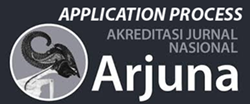Information Security System Using Blockchain Technology Implementation
DOI:
https://doi.org/10.59653/jimat.v1i01.162Keywords:
Blokchain technology, Information security, digital eraAbstract
In today's digital era, information security is a very important thing to pay attention to. There are many methods to maintain information security, but there are still many vulnerabilities that can be exploited by irresponsible parties. Blockchain technology provides a solution by providing a strong and reliable information security system. Blockchain technology can be used to ensure the integrity and validity of stored data. This can be done by storing data in blocks that are connected to one another and using encryption to maintain privacy. In addition, the decentralized system that exists in blockchain technology makes it difficult for irresponsible parties to change or delete it. The application of blockchain technology to information security systems can be carried out in various sectors, such as banking, commerce, and government. In the banking sector, blockchain technology can be used to maintain the integrity of transaction data and ensure that transactions are truly valid. In the trade sector, blockchain technology can be used to ensure that the goods being traded are genuine and have a verifiable source. In the government sector, blockchain technology can be used to store and verify election data, and ensure that election results are truly valid and representative.
Downloads
References
Abdelwahed, M., & Al-AZAKI, D. Z. (2024). Axes of transformation towards Blockchain technology in Islamic financial institutions. ARID International Journal of Informetrics. https://doi.org/10.36772/arid.aijssh.2024.6112
Altulyan, M., Yao, L., Kanhere, S., & Huang, C. (2023). A blockchain framework data integrity enhanced recommender system. Computational Intelligence, 39(1). https://doi.org/10.1111/coin.12548
Baudet, C., & Medina, M. J. (2023). The Paradoxes of Trust and Transparency of Blockchain Technologies. Journal of Global Information Management, 31(5). https://doi.org/10.4018/JGIM.321111
Ferreira, I. A., Palazzo, G., & Carvalho, H. (2023). Implications of the blockchain technology adoption by additive symbiotic networks. Cleaner Logistics and Supply Chain, 6. https://doi.org/10.1016/j.clscn.2023.100095
GULEN, K. G., & KARAAGAC, A. (2024). AGRICULTURAL FOOD SUPPLY CHAIN WITH BLOCKCHAIN TECHNOLOGY: A REVIEW ON TURKEY. Journal of Global Strategic Management. https://doi.org/10.20460/jgsm.2023.314
Hovorushchenko, T., Moskalenko, A., & Osyadlyi, V. (2023). Methods of medical data management based on blockchain technologies. Journal of Reliable Intelligent Environments, 9(1). https://doi.org/10.1007/s40860-022-00178-1
Kouhizadeh, M., Zhu, Q., & Sarkis, J. (2023). Circular economy performance measurements and blockchain technology: an examination of relationships. International Journal of Logistics Management, 34(3). https://doi.org/10.1108/IJLM-04-2022-0145
Li, D., Han, D., Weng, T. H., Zheng, Z., Li, H., & Li, K. C. (2024). On Stablecoin: Ecosystem, architecture, mechanism and applicability as payment method. Computer Standards and Interfaces, 87. https://doi.org/10.1016/j.csi.2023.103747
Li, L., Ouyang, Y., Zheng, J., & Ye, F. (2024). A hierarchical structure model for blockchain technology adoption. International Journal of Management and Decision Making, 1(1). https://doi.org/10.1504/ijmdm.2024.10051017
M, M., Baptist, L. J., T, S., & K, H. (2024). Utilizing Blockchain Technology to Provide Safety for Smart Home Networks. International Journal of Electronic Security and Digital Forensics, 1(1). https://doi.org/10.1504/ijesdf.2024.10052831
Shen, M., Che, Z., Zhu, L. H., Xu, K., Gao, F., Yu, C. C., & Wu, Y. (2023). Anonymity in Blockchain Digital Currency Transactions: Protection And Confrontation. Jisuanji Xuebao/Chinese Journal of Computers, 46(1). https://doi.org/10.11897/SP.J.1016.2023.00125
Tao, X., Das, M., Zheng, C., Liu, Y., Wong, P. K. Y., Xu, Y., Liu, H., Gong, X., & Cheng, J. C. P. (2023). Enhancing BIM security in emergency construction projects using lightweight blockchain-as-a-service. Automation in Construction, 150. https://doi.org/10.1016/j.autcon.2023.104846
Wu, X. Y., Fan, Z. P., & Cao, B. B. (2023). An analysis of strategies for adopting blockchain technology in the fresh product supply chain. International Journal of Production Research, 61(11). https://doi.org/10.1080/00207543.2021.1894497
Zheng, P., Zheng, Z., & Chen, L. (2023). Selecting reliable blockchain peers via hybrid blockchain reliability prediction. IET Software. https://doi.org/10.1049/sfw2.12118
Downloads
Published
How to Cite
Issue
Section
License
Copyright (c) 2023 Tomy Saputra, Eko Setiawan

This work is licensed under a Creative Commons Attribution-ShareAlike 4.0 International License.
Authors who publish with this journal agree to the following terms:
- Authors retain copyright and grant the journal right of first publication with the work simultaneously licensed under a Creative Commons Attribution-ShareAlike that allows others to share the work with an acknowledgement of the work's authorship and initial publication in this journal.
- Authors are able to enter into separate, additional contractual arrangements for the non-exclusive distribution of the journal's published version of the work (e.g., post it to an institutional repository or publish it in a book), with an acknowledgement of its initial publication in this journal.
- Authors are permitted and encouraged to post their work online (e.g., in institutional repositories or on their website) prior to and during the submission process, as it can lead to productive exchanges, as well as earlier and greater citation of published work (See The Effect of Open Access).























